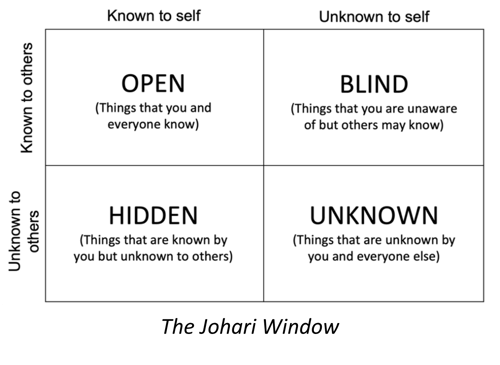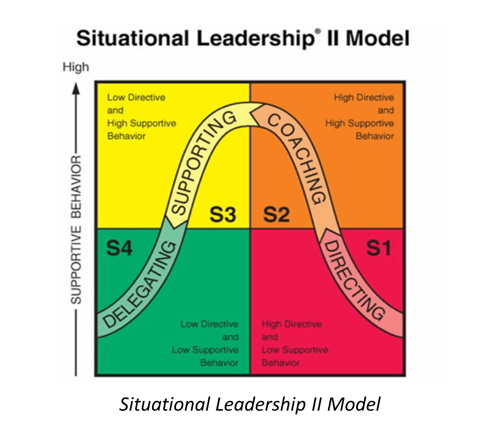 The third session of the 2022 Leadership Development Program (LDP) class focused on the second core area of the Markon Leadership Development Training Arc, which is Leading Others and Teams.
The third session of the 2022 Leadership Development Program (LDP) class focused on the second core area of the Markon Leadership Development Training Arc, which is Leading Others and Teams.
Our class began the morning session by testing our awareness with Cate Gregory and Philipia Hillman from Thrive Consulting. We were shown a video where we tracked how many basketball passes transpired during a given timeframe. Most of the group counted the passes correctly. However, most of us missed the moonwalking bear that walked past the frame. This occurrence where we fail to notice a fully visible, but unexpected object because our focus was on another task or event is called “inattentional blindness”.
This led to a breakout session where we shared with our colleagues some insights from other trusted team members' feedback about our personal leadership style. This exercise was illuminating for some of our class members, and many of us realized some of our blind spots.
These “unknown factors", which are qualities unknown to ourselves but known to others, are represented by the Johari Window. The Johari Window model was developed by two American psychologists, Joseph Luft, and Harry Ingham, to describe the various stages of awareness during communication. This model helps us understand our relationships with ourselves and those we interact with.

Building Resiliency
For the class to better understand the various leadership styles, the Thrive team reviewed traits that build resiliency. These traits are:
- Self-regard
- Self-actualization
- Interpersonal relationships
- Social responsibility
- Flexibility
- Stress tolerance
- Optimism
The class was given three scenarios where we were asked which EQi element of emotional intelligence triggered us. The EQi model of emotional intelligence comprises 16 specifically defined components of socio-emotional functioning, each of which plays a critical role in someone's personal and professional effectiveness.
Additionally, each of us in the class received our scores which we used to quantify our behaviors and compare them to a selected norm group. These personal EQi results help us understand how our behaviors differ from others.
Later on, we broke out into different teams and discussed our trigger points, during which many of us saw a pattern of triggers that routinely came up for us. This was something that the Thrive team encouraged us to reflect on and continue refining.
Related: How People-Focused Leaders Leverage Emotional Intelligence to Motivate Teams
Is a Consistent Leadership Style the Most Effective?
Do the most influential leaders have a consistent leadership style?
This was a question posed to the class by the Thrive team.
We learned that consistent leadership is not always the best way to manage situations. Since we encounter many different types of people under different conditions, it is crucial to have an adaptable leadership style. Some circumstances that would cause one to adopt a different leadership style include:
- Environment or context: In different environments, we might need to switch to a visionary leadership style, such as when a new direction is necessary for the team. Alternatively, we might need to change our style to commanding leadership, especially in times of crisis.
- Task: Leadership can also depend on the task at hand. For example, under task leadership, one might need to adjust to a reactive leadership style to ensure a task is completed.
- People or team: One's leadership style depends on the team or the people. For example, we utilize the Situational Leadership II Model and adapt our style to supporting leadership for someone who is low directive but needs high support.
- Your feelings or attitude: When it comes to your emotions or attitudes, we tend to fall back on our EQi results. These emotional intelligence insights explain how we behave with others and how our skills and personalities are displayed.

Markon Leadership Interview with Ray Carney
We began the afternoon session with an inspiring interview with Markon Vice President, Ray Carney, WELL AP. Ray shared his background in IT, his time at Arthur Andersen and BearingPoint and, ultimately, his opportunity to work with Matt Dean at Markon.
Ray explained that the opportunity at Markon aligned with his penchant for starting new initiatives and solving problems by going “where there is a need”. Ray’s message correlated with the theme of the morning session, in that a highly effective leader needs to be adaptable.
You might also like: What Does it Mean to Lead Like Springsteen?
He also discussed his profound commitment to health and fitness and how he developed a five-year plan to lose 100 pounds, in which he was undoubtedly successful. He has made many personal and professional goals throughout the years and explained to the class that you must develop a system for yourself. He posed a question to our class that people don't often ask themselves: how do you ensure you are intentional about your journey?
Another bright spot from Ray's interview was when he was asked if he attributes his career success to hard work or luck. Ray responded that he believes career success is 60 percent luck and 40 percent hard work. This is quite a different response from other leaders that we have heard from. Ray suggested that success cannot be attributed to hard work alone since this would mean we are all on the same level playing field, which is far from the truth. It was a treat to glimpse the humbling and inspiring thoughts of one of Markon's leaders.
The exercises and interviews during this month's session gave our class a unique approach to understanding different perspectives and how to relate with each other more effectively.

